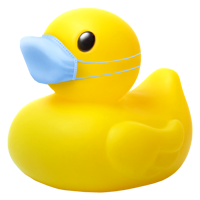Stop! Before Filing an Insurance Claim
Whether you know it or not, you have a CLUE report (Comprehensive Loss Underwriting Exchange). Essentially, this is the report insurance companies use to determine how much you pay. Even just a call to your insurance company can lead to a negative entry on your CLUE report, which in turn, can raise your insurance rates or even potentially cancel your policy. Call a mitigation expert first to help assess the damage and decide whether you want to contact your insurance company to file a claim.
Check Yourself
If you’ve been suffering any illness that doesn’t seem to go away you may have mold growth in your home. Some symptoms could include itchy, watery eyes, headaches, sore throat, and fatigue. If you’re not sure why you’re sick, you should see a doctor and tell him that you think you might have mold in your home.
Test for Mold
If you think you could have mold in your home you can test for it yourself. Many home improvement stores and online shops carry various mold testing kits. These testing kits can help you determine the presence of mold, but can’t determine the cause or how it should be handled.
Document the Damage
Was anything valuable affected? Make a list of anything that may have mold on or in it. Take pictures of the damaged items. Take photos of the damage as soon as it is possible to do so safely. This will help you if you have to file a claim on your insurance.
Clean, Clean, Clean
Anytime you’re cleaning mold you need to wear protective gear. Mold can be hazardous to your health. Mold can also come back easily if not treated correctly and thoroughly. To clean mold you may need to use harsh chemicals and fungicide. Wearing gloves and a respirator is the bare minimum when cleaning mold. After sprayed and wiped up, you should scrub the affected area and dry until you remove all moisture. You may also need to sand any affected wood surfaces.
Prevent Future Mold
If you know what areas in your home are prone to moisture and wetness you can take steps to prevent mold growth. In addition, drying wet spills quickly will help. Using mold resistant products can also help keep your home mold-free. There are many building materials, such as drywall and paint, that offer mold and mildew resistant features. Keeping gutters clean can prevent water overflowing and leaking into your house.
Download this as a PDF to Save for Reference, or Print It Out.
Call an Expert
If any of these steps seem overwhelming, there are professionals that can assist with all aspects of the restoration process. An expert will be able to help you with everything from the initial inspection, to identifying the source of loss, documenting, and cleanup work. Everything is done according to IICRC industry standards, while on call 24/7/365.
